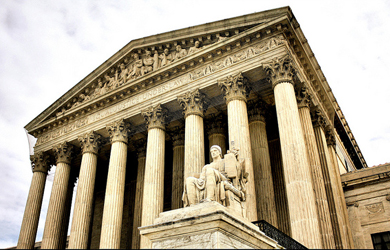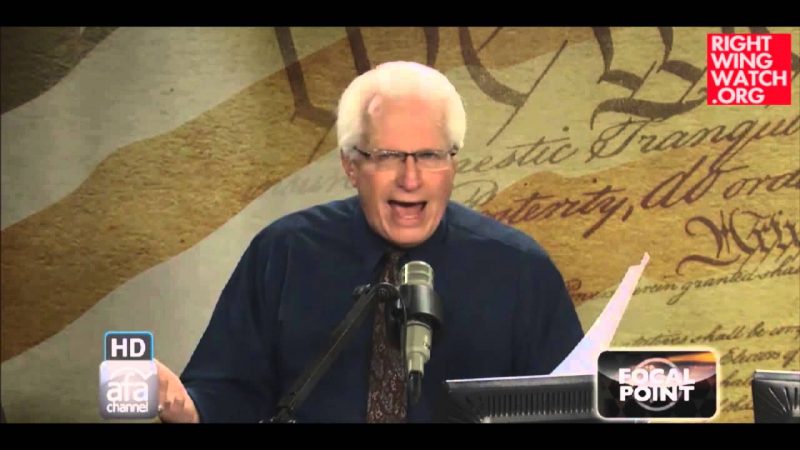The federal court ruling striking down Mississippi’s ban on same-sex couples getting married is worth reading for many reasons. Paul wrote earlier at People For the American Way’s blog about U.S. District Judge Carlton Reeves’s compelling explanation of the role of the courts in protecting Americans’ constitutional rights. The ruling is also filled with rich historical detail about the extent to which the state of Mississippi and the federal government have discriminated against LGBT citizens over the years, as well as the ways in which groups like the Ku Klux Klan and the notorious Mississippi State Sovereignty Commission used anti-gay rhetoric and innuendo in their attacks on African American civil rights leaders and institutions.
This history is an important rebuttal to bogus claims by anti-gay activists that gay people do not need to have their rights protected in law because they have never suffered from discrimination.
Quotes from the opinion, with citations removed for readability:
Any claim that Mississippians quietly accommodated gay and lesbian citizens could no longer be made in the 1960s, when prejudice against homosexuals (and other groups) became more visible during the civil rights movement. Segregationists called their opponents “racial perverts,” while U.S. Marshals – summoned to enforce civil rights – were labeled “sadists and perverts.” Klan propaganda tied together “Communists, homosexuals, and Jews, fornicators and liberals and angry blacks – infidels all.”
One Klan photo showed a black man touching the crotch of the white man sitting next to him, attempting to make the link between racial equality and homosexuality explicit.
Civil rights leaders had predicted the attack. In selecting the Freedom Riders, James Farmer had conducted interviews to weed out “Communists, homosexuals, [and] drug addicts.” “We had to screen them very carefully because we knew that if they found anything to throw at us, they would throw it,” he explained.
This reflected society’s notion that homosexuals were “undesirables.” It also placed civil rights leaders in the position of seeking rights for one disenfranchised group while simultaneously seeking to avoid association with another disenfranchised group. Mississippians opposed to integration harassed several civil rights leaders for their homosexuality. Bill Higgs was a prominent gay Mississippi civil rights lawyer. He was targeted for his activism, convicted in absentia of delinquency of a minor, and threatened with “unlimited jailings” should he ever return to Mississippi.
He never did.
Reeves also discusses the case of Bayard Rustin, the openly gay African American civil rights activist who organized the 1963 March on Washington at which Martin Luther King, Jr. delivered his famous “I Have a Dream” speech.
The most interesting part of Rustin’s story, though – and the reason why he merits more discussion here – is that he was subjected to anti-gay discrimination by both white and black people, majority and minority alike. Congressman Adam Clayton Powell, a black Democrat, threatened to feed the media a false story that Rustin was having an affair with Martin Luther King, Jr., unless Dr. King canceled a protest at the Democratic National Convention.
Other persons within the civil rights movement were similarly “put off by Rustin’s homosexuality.” Roy Wilkins, an NAACP executive, “was particularly nasty to Bayard Rustin – very hostile,” in part because he “was very nervous about Bayard’s homosexuality.” Dr. King eventually had Rustin resign “because of persistent criticism of Rustin’s homosexuality and Communist ties and because of Congressman Adam Clayton Powell’s threat.”
Rustin reemerged years later as one of the principal organizers of the March on Washington for Jobs and Freedom. A. Philip Randolph and Dr. King wanted Rustin as the march’s chief organizer, but Wilkins pushed back “because [Rustin] was gay . . . something which in particular would offend J. Edgar Hoover.” The group ultimately “decided Randolph would be in charge of the march, that Rustin would be the principal organizer, but that he would stay somewhat in the background.”
The concern about offending Hoover was prescient, as the FBI Director and other top officials soon moved to use Rustin’s homosexuality against him. In August 1963, FBI Director J. Edgar Hoover, Attorney General Robert F. Kennedy, and President John F. Kennedy urgently reviewed the transcript of a FBI wiretap in which Dr. King acknowledged Rustin’s homosexuality. A day later, Senator Strom Thurmond of South Carolina “rose in the Senate to denounce Rustin for sexual perversion, vagrancy, and lewdness.” FBI “headquarters badgered the field offices for new details” of Rustin’s sex life for months.
As Reeves makes clear, this kind of persecution was not only reserved for civil rights activists.
Rustin’s story speaks to the long tradition of Americans from all walks of life uniting to discriminate against homosexuals. It did not matter if one was liberal or conservative, segregationist or civil rights leader, Democrat or Republican; homosexuals were “the other.” Being homosexual invited scrutiny and professional consequences.
These consequences befell quite a few Mississippians. Ted Russell, the conductor of the Jackson Symphony Orchestra, lost his job and his Belhaven College faculty position after he was caught in a gay sex sting by the Jackson Police Department. In the early 1980s, Congressman Jon Hinson drew scrutiny for frequenting an X-rated gay movie theater in Washington, D.C., and although he won reelection, he resigned when he returned to Washington and was caught performing gay sex acts in a Capitol Hill bathroom. As early as 1950, the State’s flagship institution of higher learning, the University of Mississippi, “forced three homosexual students and one faculty member to leave the university” because it “did not tolerate homosexuality.” Lesbian instructors at Mississippi University for Women were pushed out of their jobs, while students at other Mississippi public universities were expelled for their homosexuality. A 1979 article on gay Jacksonians said “most” remained closeted because “they fear losing their jobs, friends and families.”
Reeves discusses the anti-gay actions of the Mississippi State Sovereignty Commission, which was created in 1956 to maintain racial segregation by any means necessary.
Sovereignty Commission “[i]nvestigators and local officials also targeted local blacks and outsiders involved in civil rights activities as being sexually deviant.” They singled out Rust College, a private historically black institution, on reports that instructors there were “homosexuals and racial agitators.”
Those with power took smaller, yet meaningful, actions to discourage gay organizing and association in Mississippi. The State refused to let gay rights organizations incorporate as nonprofits. The newspaper at Mississippi State University – student-led, with an elected editor – refused to print a gay organization’s advertisement notifying gay and lesbian students of an off-campus “Gay Center” offering “counseling, legal aid and a library of homosexual literature. An advisor to the U.S. Commission on Civil Rights concluded that the Jackson Police Department took “a series . . . of maneuvers to harass members of Jackson’s gay community.” “As of 1985 not a single university campus in Mississippi recognized a lesbian and gay student group.”
Reeves’s ruling also makes clear that official discrimination is not only in the state’s past.
In 1990, the Mississippi Supreme Court affirmed a trial judge who declared that a mother, who was a lesbian, could not visit her children in the presence of her female partner. In Weigand v. Houghton, the Mississippi Supreme Court affirmed a trial judge who refused residential custody to a father in large part because he was in a long-term relationship with another man. A dissent complained that the father’s sexuality had impaired the court’s judgment, since the child would now have to live with “the unemployed stepfather [who] is a convicted felon, drinker, drug-taker, adulterer, wife-beater, and child-threatener, and . . . the mother [who] has been transitory, works two jobs, and has limited time with the child.”
In 2002, one of Mississippi’s justice court judges, frustrated with advances in gay rights in California, Vermont, and Hawaii, “opined that homosexuals belong in mental institutions.” Although he was reprimanded and fined by the Mississippi Commission on Judicial Performance, the Mississippi Supreme Court vacated the sanctions. It was more important for gay citizens to know that their judge was biased and seek his recusal than to “forc[e] judges to conceal their prejudice against gays and lesbians,” it wrote. The “Commission urges us to ‘calm the waters’ when, as the guardians of this state’s judicial system, we should be helping our citizens to spot the crocodiles.”
Reeves details a number of recent complaints and lawsuits challenging discriminatory treatment by state and local governments as well as legal inequities such as the fact that Mississippi law permits a single person to adopt a child but not gay or lesbian couples.
This kind of restriction was once supported by pseudoscience. We now recognize that it actually “harms the children, by telling them they don’t have two parents, like other children, and harms the parent who is not the adoptive parent by depriving him or her of the legal status of a parent.”
Reeves concludes the historical section of the ruling this way:
“The past is never dead. It’s not even past.” That is as true here as anywhere else. Seven centuries of strong objections to homosexual conduct have resulted in a constellation of State laws that treat gay and lesbian Mississippians as lesser, “other” people. Thus, it is easy to conclude that they have suffered through a long and unfortunate history of discrimination.








